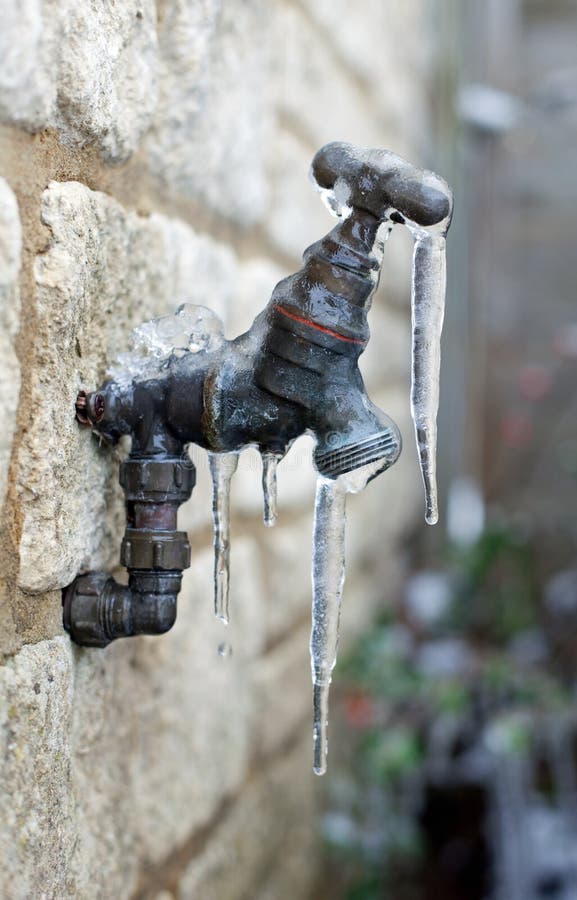Essential Tips to Prevent Frozen Plumbing in Winter: Professional Insights
Essential Tips to Prevent Frozen Plumbing in Winter: Professional Insights
Blog Article
Do you find yourself looking for insight concerning Preventing and dealing with frozen pipes?

Cold weather can damage your pipes, particularly by freezing pipelines. Here's how to stop it from occurring and what to do if it does.
Intro
As temperatures decline, the risk of icy pipes boosts, possibly causing pricey repair work and water damages. Understanding exactly how to prevent frozen pipelines is important for homeowners in cold environments.
Avoidance Tips
Insulating susceptible pipelines
Cover pipelines in insulation sleeves or use heat tape to safeguard them from freezing temperature levels. Concentrate on pipes in unheated or outside areas of the home.
Home heating methods
Maintain indoor rooms adequately heated, especially areas with plumbing. Open cupboard doors to enable warm air to circulate around pipes under sinks.
How to identify frozen pipelines
Seek lowered water circulation from faucets, unusual odors or sounds from pipes, and noticeable frost on exposed pipes.
Long-Term Solutions
Architectural modifications
Take into consideration rerouting pipelines far from outside wall surfaces or unheated locations. Include additional insulation to attics, basements, and crawl spaces.
Updating insulation
Purchase top quality insulation for pipelines, attics, and wall surfaces. Appropriate insulation helps keep consistent temperatures and lowers the danger of icy pipes.
Protecting Outside Plumbing
Yard hose pipes and outside taps
Disconnect and drain garden pipes before wintertime. Mount frost-proof spigots or cover exterior faucets with protected caps.
Recognizing Frozen Pipes
What triggers pipelines to ice up?
Pipes freeze when subjected to temperature levels listed below 32 ° F (0 ° C) for prolonged durations. As water inside the pipelines ices up, it increases, taxing the pipeline walls and potentially causing them to burst.
Risks and damages
Frozen pipes can result in water disturbances, home damage, and expensive repair work. Burst pipelines can flooding homes and trigger substantial structural damage.
Indicators of Frozen Piping
Identifying icy pipes early can prevent them from breaking.
What to Do If Your Pipelines Freeze
Immediate actions to take
If you suspect icy pipes, maintain taps open to ease pressure as the ice thaws. Use a hairdryer or towels taken in hot water to thaw pipelines slowly.
Verdict
Avoiding icy pipes calls for positive actions and quick responses. By comprehending the reasons, signs, and safety nets, homeowners can secure their pipes during cold weather.
5 Ways to Prevent Frozen Pipes
Drain Outdoor Faucets and Disconnect Hoses
First, close the shut-off valve that controls the flow of water in the pipe to your outdoor faucet. Then, head outside to disconnect and drain your hose and open the outdoor faucet to allow the water to completely drain out of the line. Turn off the faucet when done. Finally, head back to the shut-off valve and drain the remaining water inside the pipe into a bucket or container. Additionally, if you have a home irrigation system, you should consider hiring an expert to clear the system of water each year.
Insulate Pipes
One of the best and most cost-effective methods for preventing frozen water pipes is to wrap your pipes with insulation. This is especially important for areas in your home that aren’t exposed to heat, such as an attic. We suggest using foam sleeves, which can typically be found at your local hardware store.
Keep Heat Running at 65
Your pipes are located inside your walls, and the temperature there is much colder than the rest of the house. To prevent your pipes from freezing, The Insurance Information Institute suggests that you keep your home heated to at least 65 degrees, even when traveling. You may want to invest in smart devices that can keep an eye on the temperature in your home while you’re away.
Leave Water Dripping
Moving water — even a small trickle — can prevent ice from forming inside your pipes. When freezing temps are imminent, start a drip of water from all faucets that serve exposed pipes. Leaving a few faucets running will also help relieve pressure inside the pipes and help prevent a rupture if the water inside freezes.
Open Cupboard Doors
Warm your kitchen and bathroom pipes by opening cupboards and vanities. You should also leave your interior doors ajar to help warm air circulate evenly throughout your home.

We had been shown that editorial about Helpful Tips to Prevent Frozen Pipes this Winter from an associate on our other website. For those who enjoyed reading our article plz consider to share it. Thanks for your time spent reading it.
Find Out More Report this page